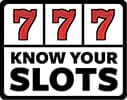Understanding which slots are volatile can seem like an impossible task, just by looking around the casino floor. Seemingly games that look similar in terms of graphics, symbols, etc. can be very different in gameplay style and, therefore, the volatility and how they pay out in the short term.
That said, there are some giveaways that can help indicate a slot is more or less volatile. Sometimes it’s the traits of how they are designed, sometimes it’s a studio known for a certain type of game. We’ll share our thoughts in this post.
Traits of a More Volatile Game
There are a number of ways you can potentially spot a more volatile game in its natural habitat (the casino floor):
- Progressives: Progressives will take a portion of the overall payout and lock it up in potentially difficult to hit progressives. Regardless of the style (Must Hit By, Quick Hit, progressives that grow by bets, etc.), they pull some of the pays away from the line hits and bonuses in favor of incrementing the progressive.
- Games with Both Features and Bonuses: Many earlier slots only had something like a free spins bonus, if they had a bonus at all. Some slots, like Twin Win and Bonus Times, don’t even have a bonus, so all the money’s in the line hits. But when you also have a feature with winning potential (think the Links, Mighty Cash, Hot Shot and Quick Hit, etc.), you now have pays being pulled even further out of the line hits and being diverted to the features, and the bonus, and potentially the progressives… that doesn’t leave a ton for line hits.
- Multipliers: The use of multipliers can make a game more volatile, especially when the multipliers stack. Think of a game like Buffalo, where wilds in the right spots, and clumped together, can yield pretty hefty pays. But that means dead (non-winning) spins to make up for it.
- All Ways Pays: The scatter pay model where you can “win 243 ways” or “1024 ways” and so on can increase the volatility, especially when multiple symbols can call in a given column, because line hits can quickly multiply their way into big wins. But that also means a lot of near misses and dead spins in return.
- Stacked Symbols (when combined with All Ways Pays): Stacked symbols can either boost or lower volatility, and it generally comes down to the format of the game. When combined with All Ways Pays, it can be a holy grail of volatility. This is what makes games like Buffalo, Timber Wolf and 88 Fortunes so amazing when it hits. Aristocrat and Shuffle Master have built solid reputations designing games in this vein.
- Mystery Stacked Symbols: Some games will use a variant of stacked symbols where a symbol is chosen each spin. Robin Hood and the Golden Arrow is an example of a classic WMS game with this feature. If you get the wild symbol as the random stacked symbol, and it lines up, that can lead to massive line hints. But the fact that it’s a single symbol that could be a low paying or high paying one is part of what makes the game so volatile.
- Less Overall Lines: If it’s a lines-based game, less lines available for pay can be a sign of a more volatile game (or version of a game if it comes in flavors). The reason for this is there’s simply less chances for a line hit if there’s less lines to evaluate. The pays generally make up for it, but that means more dead spins, and bigger wins when you get a line hit. Even if it’s 10 credits vs. 5, it can feel very different in a short session.
- More/Better Bets or Feature Bets: We talked about this before, but this basically makes you pay more to jazz up the features, but again does nothing for the base game line hits. So each spin you don’t get a bonus, you’re paying more for the hopes that eventually, when you do get one, it’ll be worth it.
- Asian-Themed or Buffalo-Themed Games: Any type of game can be themed any way, but over time Asian-themed games have been given volatile designs, and so manufacturers will sometimes use this as a symbol of a volatile game. Ditto for Buffalo, thanks to Aristocrat’s popular game series. WMS’ Double Buffalo Spirit is an example of a non-Aristocrat buffalo-themed game that is, itself, a toughie.
- Higher Bet Requirements: Games that require more coin-in to be able to make all the pays possible is another sign of volatility. Take Dancing Drums – you can play it at 8 cents a spin, but four of the five gold symbol pays are turned off and you have no access to any progressives. To get all that, you must bet at least 88 cents. The game plays very differently when you’re chasing gold coins vs. going for progressives and the dragon gold symbol (with the red background).
- Games That Can Trigger Massive Free Game Counts: The main reason this makes a game more volatile is the free games can be difficult to get, and when you do if you don’t get a lot of free games, the free games disappoint. But get a ton of games and the bonuses can be massive. Many times these games feature other things, like mystery stacked symbols, which can amp up the volatility.
Many games will use some of these features in combination. Take Mega Vault, a popular and incredibly volatile game by IGT, who doesn’t tend to make games that volatile that often. The combination of all ways pays, the ability for symbols to clump in reels for bigger line pays, and the ability to land multipliers make big wins astronomical, but to offer that there’s a ton of dead spins.
As far as manufacturers, Konami, Aristocrat and Shuffle Master are brands that tend to have pretty volatile machines as a rule. Seeing their logo should be a sign that a game could be tough at times. WMS also has historically had some pretty volatile games, although generally speaking a bit less so, and certain of their lines, like Colossal Reels, even less so, as we’ll explain shortly.
Signs of a Less Volatile Game
You can also look for some of these features as signs a game may be less volatile.
- More Overall Lines: Having more lines to evaluate means more chances to line up symbols. But the line pays will be smaller, and that’s how you know it’s a less volatile machine – more smaller hits, more often, with less big hits along the way (although they certainly can happen, like on any slot).
- Stacked Symbols, When Combined with a Line Pay format: When Stacked Symbols are on a slot with standard line formats, they tend to be less volatile games with a higher likelihood of things like full screens – so the pays are reduced accordingly.
- Games With Lots of Wilds: Wilds match with just about everything, so when they can appear in abundance, that’s usually a sign of a less volatile game. (I’m looking at you, Golden Egypt.) Even games like Scarab, where you have to put at least $7.50 through in a cycle, generally sees that 10th game pay within a general range – you’re probably not going to see 500x wins on Scarab at all, and that’s a pretty good sign a game isn’t too volatile. Where it can get volatile – the free spins – it is very hard to trigger, another sign that the bulk of the pays are in the main game. A game can be designed to make the wilds part of the volatility, but that’s usually more the exception than the rule.
- Lower Minimum Bets: Generally speaking, games with lower minimum bets are more likely to be less volatile by the nature of less money going through them; the pays will also be lowered accordingly, but having a lower risk of losing a lot is generally fine by those who play them.
- Games With Low-Paying Features: A prototypical example of this might be Goldfish, where features occur relatively frequently, and the bulk of them don’t pay all that much. That too can be an indicator of a less volatile machine, because again it’s giving you those small payouts more often.
WMS’ Colossal Reels puts some of these techniques into practice – 100 lines, so plenty of lines to hit something, but a 50 credit minimum bet – every 2 lines is 1 credit. So you can get a lot of line hits without getting big payouts much of the time, but it evens the game out. A similar concept on a smaller scale is their Money Burst series, but with less overall lines it tends to be more volatile.
Manufacturers who have a tradition of generally less volatile games include Bally, Gimmie Games (with Mighty Cash being a big exception), IGT (particularly many of their classic games), High 5 Games’ designed games (which have been distributed by multiple companies, including Bally and IGT). If you see a game trumpeting a big win with 10x your bet, you can venture that it’s designed by a manufacturer that tends to favor lower volatility designs.
Do you prefer low volatility or high volatility slots? Share your favorites in the comments!









I like both the low and high volatile slot games but overall I prefer the high volatile. I like to find a paying low volatile when I start out so I can gather a little up front money, then I’ll take it to the high volatile games. Last year I played a 4 game slot with all being Buffalo. I played all lines x2 at $4.80 a bet. I won the super free games feature and won $25,700 — good times!
Hey Kelly – it certainly can be fun to hit a massive win on a higher volatility slot, even if it can be tough going at times to get there. That’s probably why more games are leaning that direction on the casino floor today!